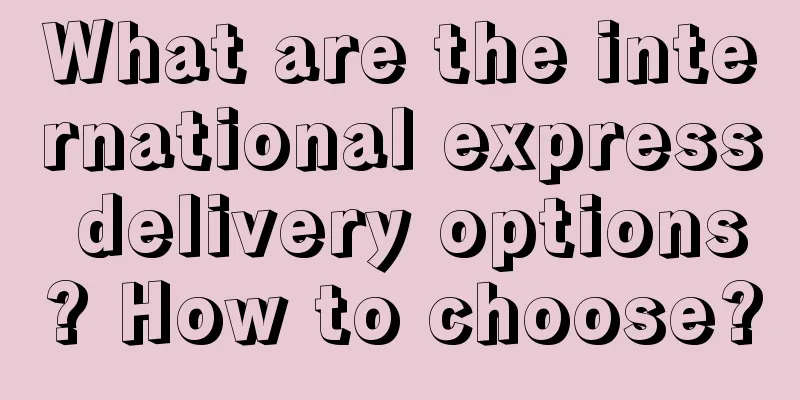Two models to explain the development of new pet brands from 0 to 1

I wrote an article about insights into beauty before, and then a friend who makes handmade cat food asked me a question: What should a new pet brand do? Based on my current cursory understanding of the pet market, foreign brands are probably gaining recognition, such as Mars, Nestle Purina and Colgate-Palmolive, while domestic brands are unable to gain the full trust of consumers. In addition, the relevant manufacturers that once produced OEM products for foreign pet brands have long had brand awareness. They have become giants among domestic brands, such as China Pet Foods and Petco. As a result, new pet brands face difficulties in market entry, channel construction, and user management. Fortunately, the pet industry is an industry with a gradually rising ceiling. According to the White Paper on China's Pet Industry, the scale of my country's pet consumption market reached 249 billion yuan in 2021, of which pet food consumption expenditure accounted for 51.50%. Furthermore, both insiders and outsiders unconsciously compare pets with the maternal and infant industry. Raising a pet is like raising a child. Judging from the search data on platforms such as Xiaohongshu and Douyin, pets have become the next maternal and infant track . There are also capital cases, such as Biostime Group, a company that makes infant nutrition products, acquiring Solid Gold, an American pet nutrition company. All signs indicate that there are many opportunities here, but what should new pet brands do? 01 The competitive strategy of newcomers always prioritizes differentiationLet me first talk about a strategic model. In 1980, Michael Porter published Competitive Strategy, which mentioned three competitive strategies that influenced later generations: total cost leadership strategy, differentiation strategy, and target concentration strategy. As a consumer goods company and a retail enterprise, it is crucial to choose a suitable competitive strategy in the market competition. In the book Retailing edited by Professor Zeng Qingjun, it is mentioned that experience shows that at least 50% of profit changes depend on the choice of strategy. Among them, the giants basically adopt the total cost leadership strategy. They have a mature industrial chain and channel system, thus achieving marginal cost reduction. Take Mars for example. This company not only provides pet food for one-third of the world's pet cats and dogs, but also owns many well-known brands such as M&Ms, Wrigley, Dove, and Snickers. It can be said that Mars has a bird's-eye view of the entire industrial chain, so it can better control the market, reduce unnecessary cost losses, and achieve overall cost leadership. So, if new brands want to stand out from such cost control, they must provide something different, that is, to do something that neither foreign nor domestic big brands have done. How to find differentiation? Or the difference in product categories: Although they both make cat food, my friend made handmade cat food. Or the difference in scenarios: the big guys generally focus on the daily consumption scenarios of the masses, so can you go to cat cafes or offline pet exchange meetings? Or the price difference: This is actually about finding a vacant price range. Foreign capital is basically high-end, and domestically produced products are basically low-end, so can you grab the price range in the middle? 02 Find your strengths in big and small high-techAfter choosing your differentiation direction, what new brands need to do is to break through at a single point and launch a saturation attack. Any enterprise has limited resources. Once the most core and important strategic direction is determined, all elite troops and resources must be mobilized for a saturation attack, focusing on one point and making a breakthrough on that point first. This may be contrary to the views of traditional retail consumer companies. In the past, everyone was thinking of filling in the gaps in the barrel. The pet supplies retail industry generally looked for a benchmark company to look at its product line, channel layout, brand operation, etc., and then learned and followed up. As long as the shortcomings in every aspect are made up, the gap between it and the giants will not be that big. But now channels, communication and other aspects are all online, and even the supply chain is taking a light model to do social division of labor. If you want to rise quickly in the short-term competition, you can only quickly find your shining point, then constantly strengthen it, and become the first. For example, among some emerging brands that have emerged in recent years, Gaoyejia was the first to make probiotic grains popular, and Biriki and Crazy Puppy have also been telling the public that they have their own factories. So, in the current booming pet industry, how do new brands choose to order? In this regard, I have always admired the logic of Jiang Xiaobai and Lao Tao many years ago: big, small, high and new. First, big means large market capacity. Only by running a business in a large industry can you avoid hitting a ceiling. Before choosing probiotic food, Gaoyejia would definitely look at the development prospects of this category and whether the current market capacity can support the development of the company. Similarly, brands that claim to have their own factories, transparent factories or other features must also think about whether this thing will be a trend in the future. We took a look at the previously hot fruit wine industry, and some brand leaders said frankly that the Chinese industrial chain was too mature, so why bother to build their own factories? It would be more efficient to use the money for building factories to do OEM quality control. Insight into trends all depends on the boss. Second, small means a small entry point. All markets are very large, and the categories are very large, but that does not mean that all market categories and every consumption scenario need to be cut into. Brands need to find very small market gaps. Cat food is a big market, but Gaoyejia will start with probiotics, which will allow it to penetrate the traditional market more sharply in the early stages of development. It’s not just about the category. In terms of marketing, Crazy Puppy has greatly improved its business through WeChat official accounts; in terms of channels, I have previously come into contact with a pet food brand that relied on the promotion of cat cafe owners. Third, high means high efficiency. In terms of production supply chain, product development, brand communication and channels, we are studying how to create higher efficiency, or in other words, finding a breakthrough point for relatively higher efficiency. For example, after the selling points of "low temperature baking, 0 grains, 0 meat powder" gradually lost their attention, the market demand for fresh ingredients became more obvious. At this time, there was a brand called Xiaopei Pet, which focused on the concept of "fresh cooking" and fresh food for pets. From another perspective, is there also an opportunity to become an efficient warehousing and logistics supplier specializing in the pet industry? Fourth, new means new products and new technologies. This is very simple. The first domestic and only Tetra Recart wet food production line for pets built by Birridge is a representative of new technology. In addition, most pet foods have evolved from early steaming, baking, and puffing to the increasingly popular freeze-drying technology. What I least expected is that there are now smart cat beds that use AI technology to achieve "cat face recognition". 03. Measure your business freedom and verify your strategic planning unitSelect a single point of differentiation, that is, find a strategic planning unit that is not generally reached in the industry. What is a strategic planning unit? In my opinion, it can be regarded as the basic point around which your company does business. For example, if someone sets the strategic planning unit as handmade cat food, then he will mainly make diversified designs around this product. But what if the strategic planning unit is set as handmade? Then he will mainly hone the craftsmanship, and then he can make cat food, dog food and even some supplies. The strategic planning unit should not be too small, otherwise it will not be able to resonate with the market; nor should it be too large, otherwise it will tend to be spread out too widely. So how do you determine the size of your strategic planning unit? In fact, size is relative, and its relative reference comes from the company's most valuable resource - freedom . If the strategic planning unit you choose perfectly matches your business freedom, it is the most suitable. There is a classic tractor case on Baidu that can help us understand this. If a machinery company defines its strategic planning unit as farm tractors, its strategy is actually of little use. Because the strategic unit is at too low a level in the company, first, it cannot consider product applications other than farmers and other user groups; second, it is not enough to deal with professional manufacturers of marine, automotive or construction machinery and equipment, who can enter the agricultural tractor market with a set of new products with boundary conditions at almost any time. In this case, perhaps a better choice for the strategic unit would be the small diesel engine that is essential for agricultural tractors, because it has sufficiently broad prospects and sufficient strategic freedom. 04 The ultimate goal of a single-store breakthrough is actually to reshape the cost structureFind your single point of differentiation, and then launch a saturation attack to achieve a breakthrough. Porter calls this the target concentration strategy. How to desaturate the market? We should pass the test on the most basic products and services. There are too many product problems in the pet industry. Some people even use soil and sawdust to make dog food, which has completely deepened users' resentment towards domestic brands. Therefore, pet industry professionals, please do not let others force you to make good products at any time. This is the most basic thing. If you want to make a career, your product must be good. Without a good product, you can't even enter the real finals. Many companies with good products may not win even if they enter the final round, because there are too many excellent companies at the same level. So, don't worry about the basics, and do your best to be the anchor. Only after the products and services are passed, can we talk about other things, such as marketing and channels, which have a particularly profound impact on the company. Jiang Nanchun, the boss of Focus Media, who has been engaged in consumer product marketing for 30 years, shared his experience that the entire consumer product industry must return to its essence, which can be summarized in eight words: "deep distribution" and "capture the mind." How to do it? It’s back to the logic of branding. Conduct market analysis, select target markets, do positioning, and finally add some creative content and new media channels… But what I want to ask is, what is the ultimate purpose of doing all this? Is it to serve the differentiation strategy, or to serve the target concentration strategy of single-store breakthrough? I believe that the ultimate goal is to reshape the current industry's cost structure so that the giants that originally had leadership in total costs will no longer be able to achieve total cost leadership under the new mainstream cost structure. In this way, your total cost can be ahead under this logic and become a new giant. Costs mainly consist of fixed costs and variable costs. Companies with low fixed costs can offer lower prices during recessions, but companies with high fixed costs obviously cannot. This is the logic of a real price war: using low costs to drive low prices and thus seize the market. But now the price war in the pet industry is not based on this logic, but on capital burning, especially in the offline store format, which was terrible in the past few years. So what should new brands do? They should attack such fixed cost barriers with variable costs. For example, when the giants spend huge amounts of money to influence users, place KOLs and traditional outdoor advertisements, you will find that no matter how good or bad the market is, the benefits of marketing will always be marginally diminishing. As a result, many brands are limited to continuously optimizing marketing strategies and improving marketing efficiency. There is another path, which is to optimize the market . To give a simple example, when industry giants are involuntarily involved in marketing, part of their corporate revenue will inevitably be consumed by these additional costs. It is obviously unwise for new brands to follow suit. At this time, we need to start from the market and find some breakthroughs in variable costs. For example, we can provide dealers with some floating incentive mechanisms to allow dealers to obtain additional returns and increase the sales scale of products. Can't the giants do this? In theory, yes. But from experience, in mature markets, the giants' game with distribution channels is relatively stable and rarely provides such additional returns. In this way, newcomers can work on variable costs to challenge the fixed cost advantages of giants. If we can look for the profit mechanism between variable costs and fixed costs from multiple angles, I believe it is possible to reshape the industry's general cost structure. Looking back at the entire consumer industry, Wahaha's joint sales model of payment before delivery and Hongling's C2M business model have actually reshaped the original cost structure. 05 ConclusionI accidentally wrote more than 4,000 words, but in summary, there are three points: First, new brands must first use differentiation to find a single target point of concentration, and then move towards overall cost leadership. The overall cost leadership strategy, differentiation strategy, and target concentration strategy proposed by Michael Porter are not separate strategic models. In fact, we should use them together. Second, during the entire strategic practice process, what we consider most are competitors, the market and the company's own operating freedom. Does it sound familiar? This is actually another model proposed by Kenichi Ohmae, a leading figure in Japanese strategic research - the 3C Strategic Triangle Model. Sustainable competitive advantage is possible only when the company, customers and competitors are integrated into the same strategy. Third, the above is indeed correct nonsense. Because the theories of Michael Porter and Kenichi Ohmae can be used not only in the pet industry, but in any industry. above. Author: Huang Xiaojun; Official Account: Jingyan Brand Lab (ID: JingyanLab) |
Recommend
How to join Shopee? What are the conditions for opening a store?
Shopee is a platform that many merchants have aske...
The ticket is 40 yuan and the surrounding area is 800 yuan. Hongshan Zoo is really good.
Nanjing Hongshan Forest Zoo has become popular on ...
What is the difference between Amazon ASIN and SKU? How to distinguish them?
For new Amazon sellers, if you want to run an Amaz...
Xiaohongshu focuses on 7 common problems: how to solve the note life cycle and user inaccuracy?
As a content-driven social platform, Xiaohongshu&#...
How Businesses and Brands Can Avoid Failure
The article analyzes and summarizes the experience...
Instead of talking about the “big” reunion, it is better to focus on the “small” perfection in Mid-Autumn Festival marketing
As festival marketing continues to upgrade, how br...
How long does it take for Amazon's business manager to give me the registration link? What should I pay attention to when opening a store globally?
Now if you want to open a store on the Amazon plat...
Double 11 refunds are difficult, consumers are angry
This article introduces the wave of consumer refun...
8 methodologies you must know to do Xiaohongshu, super easy
How to create good content on Xiaohongshu? How to ...
Is Shopee easy to do business? Tips for entering Shopee
When it comes to cross-border e-commerce, the most...
Will I be notified if I fail to register on Shopee? Can I apply again?
Many friends now prefer to do cross-border e-comme...
100 Keyword Predictions for 2023 | Food and Beverages (41-50): Zero Alcohol, Web3 Winery, and Energy Saving
WPP's brand Wunderman Intelligence released it...
What are the cross-border e-commerce platforms in China? How to choose?
Nowadays, you need to find a suitable platform to ...
How to open a store on eBay? How to charge?
eBay is an overseas purchasing platform that provi...
After the collapse of "Wang Ma": only 500 fans were lost in one day, and the business map was exposed
I think Wang Ma's company is just a microcosm ...









